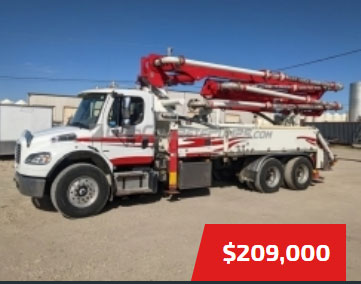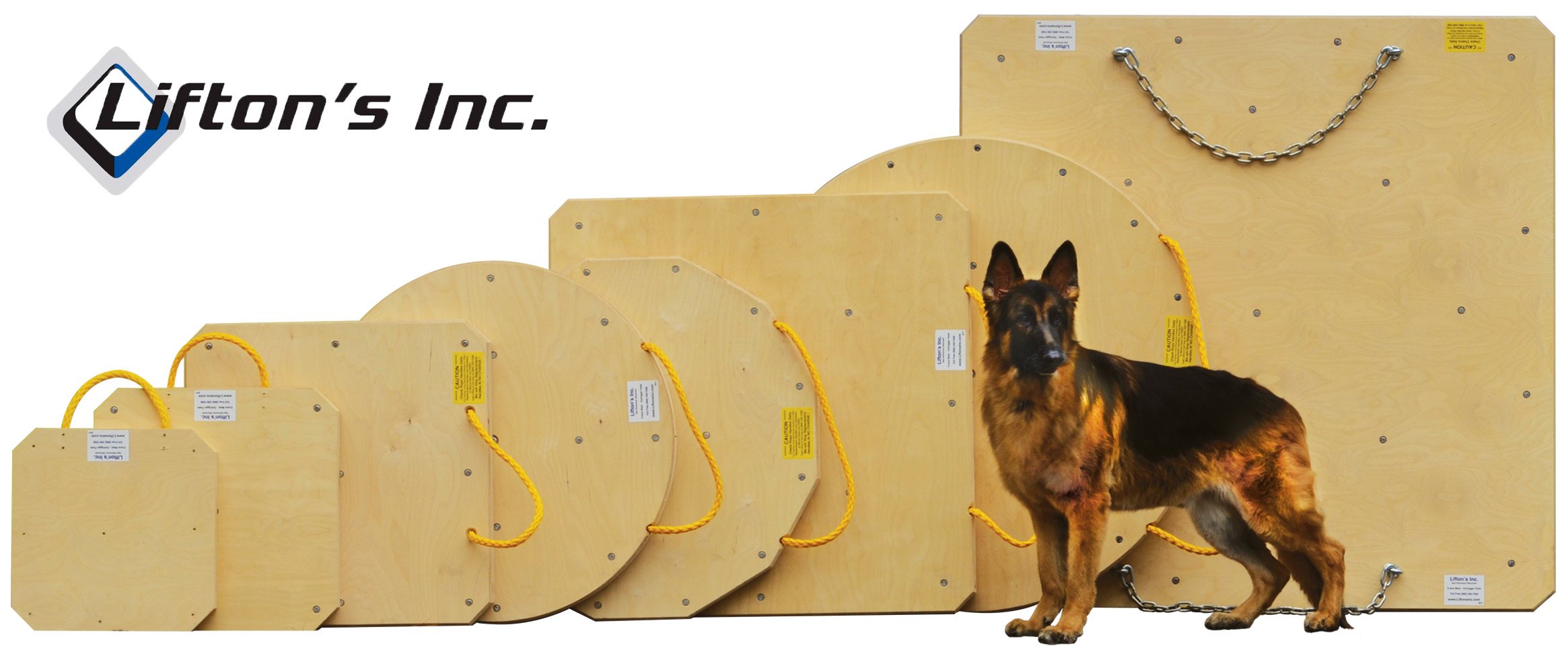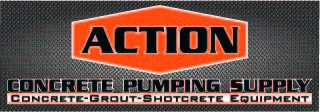| northern pumper | 11-17-2010 | comment profile send pm notify |
|
Just wondering what all you guys think about who is responsible for a hose whipping accident. Is it the ready mix driver that lets the hopper go dry, or is it the pump operator who doesn't realize the hopper has gone dry or has a plug up and doesn't catch it in time before something lets go for the worse. Just wondering what some of your thoughts are??? |
||
| Many | 11-17-2010 | reply profile send pm notify |
|
That depends alot on how the operator handles things.Operators need to be tight lipped,notify the office of incident,use safety camra in pump (should have),get names of witnesses,take good notes.To many pic's is not an option here,attornies may need. You can bet at least 3 bell peppers the pump company will be the first named,followed by the redi mix company,general contractor,even the flatwork/wall contractors.A designated safety person should be there as soon as possible,knowledgeble in accident prevention.Past that it's the courtroom/osha assigning responsobility. |
||
| Many | 11-17-2010 | reply profile send pm notify |
|
Oh,this topic of liability should be mentioned at your safety meetings,alot |
||
| Todd | 11-17-2010 | reply profile send pm notify |
|
Wow what a great question. |
||
| DIGGER | 11-17-2010 | reply profile send pm notify |
|
The lawyers will go for the deepest pockets, the pre court discussions will try to stich up the insurance carrier. The court will divide it between: a) ready mix supplier 20%, b) prime contractor 20% c) pump owner 30% d) ready mix driver 20% e) concrete placer 10% Each party will go their insurance carrier, premiums will go up. How to win? ....... go naked and have no assets in your name and hide behind a $2 Corporation. |
||
| Mr. Ed | 11-17-2010 | reply profile send pm notify |
|
Todd's right, this is a great question. One thing you guys should be aware of, though...MOST hose whipping incidents are not the result of air sucked into the pump from the hopper when a ready-mix truck lets it run too low. That's only the cause about 1/4 of the time. One of the most serious hose whipping hazards is upon startup, when the entire system is filled with air, you're pushing it through with concrete that contains too much rock (the first few turns of the truck), and the pipe and hose are not yet primed. Too many accidents happen when the hose guy is injured before concrete has even made it out of the system. The rest of the time, air is introduced into the hose through the hose. That could be by reversing the pump, or by removing pipe and rehooking the hose, by removing the hose or a reducer to remove a plug, then reattaching - or one more cause. The last cause I'm listing here is by far the most common cause of introduction of air into the hose: stopping the pump with a level difference between the turret of the boom and the tip hose. In other words, concrete will dribble out of the pipeline by the force of gravity after you stop pumping for any reason. If you see a turd of concrete come out, IT'S VOLUME HAS BEEN REPLACED BY AIR. You stop the pump dozens of times a day. Every time you see the dribble, know that there's now air in the pipe which will be pushed to the hose. It's still rare that the air in the line results in a hosewhip under the gravity scenario. If you stop pumping, that insinuates that concrete has made it through, so you've got a lubricated line. Just restarting hardly ever causes the blockage that would start the hazardous air-compressing. In fact, that's one of the biggest problems with trying to prevent hose whippings...restarting after stopping results in accidents such a low percentage of the time that people stop worrying about it. The Safety Manual warns you to get personnel away from the end hose when restarting after stopping. If you do that, there will NEVER be a hose whipping accident resulting from stopping the pump. Because you can pump for years without ever seeing the hose whip in that situation, it's easy to let down your guard, and that's the problem. That one-in-ten-thousand-times hose whip can be just as deadly as any other hose whip. Stopping the pump happens so frequently that even though it rarely leads to a whip, it still accounts for about half of the hose whipping accidents. Count how many times you stop the pump with the boom in a gravity-dump position tomorrow. Multiply that by the 8000 jobs happening in the US tomorrow. And THAT is why, even though it's a pain in the butt, you still have to get people away from the hose when restarting after stopping.
|
||
| northern pumper | 11-17-2010 | reply profile send pm notify |
|
Hey digger i agree with the going naked part thats for sure I poses the question because of an incident i heard of where it sounds like the pump company and the general contractor are strickly blamming the redi mix company. I don't claim to know everything as i see it in this business you learn something new everyday. But understanding the company it happened to and as much as i don't like most redi mix drivers i have to say that the fault falls pretty much on both parties. Just wondering how many operators out there get the support from the companies they work for to have a 2nd man on the machine when they are doing pours where they have to be away from the machine like on a 2nd floor or just away from the machine in general this is likely part of the problem with this incident... |
||
| JCON | 11-17-2010 | reply profile send pm notify |
|
I'd say it would be the operators fault because it is our job to remain alert. If the hopper runs dry you should know by the sudden change in volume and act accordingly. In the case of a plug for my self if im pumping fast i keep my finger on the "on" and "off" switch so i can act fast if theres a piece of debris or a rookie pulling hose and if there is a rookie pulling hose you should always keep an eye on him when the hose is pulled. |
||
| pumpjockey | 11-17-2010 | reply profile send pm notify |
|
Are the stiff, anti-whip hoses a decent solution? How about the clamp-on stiffener by Pumpco Parts? Can a fella do the same thing by slipping the hose into a plastic pipe - a sleeve, if you will - 6 or 7 foot long for a 12' drop hose and suspend it from the tip elbow or reducer above? This would add quite a bit of rigidity to the otherwise floppy hose, but still allow for some freedom to push it around, and also still have the relative softness of a hose, should the end of it hit the mat or hose-man's foot? |
||
| Dipstick | 11-18-2010 | reply profile send pm notify |
|
My opinion... When you run with a reduced endhose, a hose whip is 100% the operators responsibility. Use a stiff 5'' endhose and listen to your pump an a serious hose whip is as good as impossible. |
||
| Travelteck | 11-18-2010 | reply profile send pm notify |
|
I will jump on the wagon and agree with Mr.Ed.
I have been present when a tip hose whipped and sent a good guy to the hospital. We had been waiting for mud. the pump operator lowered the hose to stop splatter as a courtesy, about 1/2 hour later the operator lifted the hose to resume pumping, to Quote a saying All hell broke loose, fortunately the hospital trip was a precaution and all that resulted was a little skin loss.
From that day on it was my LAW NO ONE near the hose until the concrete is flowing freely, I feel this is the only way to minimize the injury IF this occurs. Lowering the hose to prevent splatter is common in the industry, I would wait for the guys to walk away then lift the hose so that the concrete in the end of the hose can fall out and not start to set causing a plug. I also had it happen one time that I had sucked the mud back out of the boom to move, then when starting up again the pump compressed the air in the boom and released at the end hose. No one injured due to no one was at the hose, As operators you are responsible for safely operating, allowing labor workers and hose men near the hose when priming and starting up is not a good practice.
Both times it happened it was not air from the mixer but the actions of the operator that lead to the issue, I have witnessed this about 3 or 4 times in 25 years so the issue of never seeing it till it happens is a big one, becoming relaxed and complacent is also a concern it can happen at any time and it only takes once to seriously hurt some one.
As usual the Blame will rest with the legal system, learning how to avoid it is the key.
My 2 Cents |
||
| rusty22 | 11-18-2010 | reply profile send pm notify |
|
Operator.Like JCON said.As for the add on's 4" hose s pipe that would be the contractors.He ask for it.All pumps come with a 5" tip hose.But the operator upon start up can prevent alot. If you take 2, 3, 4 strokes and the concrete does not start flowing out the end of the hose, what do you think is going on.As for a clunker out of the mixer truck. Find it and it's there problem.Most of this can be prevented by training. |
||
| bignasty | 11-18-2010 | reply profile send pm notify |
|
all very good points but there is one guy that hit it on the head 5 INCH HOSES this will cut down on 95% of these hose whippings, anytime there is a reducer your taking a gamble, safest bet if you were to reduce is ALWAYS USE A STEEL REDUCER, NO REDUCTION HOSES, and the post about leaving that hose on the ground is a very good point especially during the summer, there is no way to completely stop these hose whips from happening there is just to many variables involved, ready mix drivers being the biggest and foreign objects getting in our piping systems another, but I do believe if it was mandatory to run 5" hoses on all slab pours and use metal tremme pipes on walls and such instead of reduction hoses or reducers and smaller hoses we would definitely see a significant drop in these accidents but until someone sets the standard we will continue having needless accidents, we want these pumps to be high output machines but then we want to reduce at the end I for one dont understand it, hoseman also should have to have proper PPE before we as operators can let them on the hose safety glasses, faceshield, hardhat, rubber boots, I know its not our place ,but in the end we are the ones being sued for thier ignorance we will see in the coming years were either pump companies will have to provide thier own trained hoseman or the placing crew will have to sign a document saying there hoseman has been trained in the safe operation of the hose, it sounds crazy but we have to be osha trained for jobs,certified by the ACPA, shouldnt they have to be trained also or does the responsibilty have to fall on us to train a amigo who cant speak our language, or others who have no inclination of working safe , most are looking for a way to have a lawsuit anyway, its just not a good situation, maybe in the future we'll see more pump,place,and finish companies because of this reason knowing the laws on suing the company you work for it would be hard to get more than a few workers comp checks unless it was a serious injury or gross negligence. |
||
| stink21 | 11-18-2010 | reply profile send pm notify |
|
running a straight 5 would reduce hose whip almost down to 0 but do u run a 5 on all jobs?..u either have to pump way to hard for what your doing or it just splatters to hell an back an everybody on the jobsite is bitchin bout it an i pump thru a reduction hose 90% of the time an ive never had a hose whip cause i kno when by sound an flow soon as my hopper gets low an sucks air an if u can catch it the ann reverse it a stoke or so ur good an like i said i run reduction hoses 90% of the time cause i do lots of walls an i reduce down to 3" an ive never had a whip cause i pay attention an listen but i do kno that the day will come an it will happen to me |
||
| hush | 11-18-2010 | reply profile send pm notify |
|
hose whipping it happens to me once !!
the problem was in the mix and the driver
of the ready mix-truck the mix was to dry and rocky !!!! thank god i was near the pump and i saw it coming no one was hurt!! only the gars below...
Todd great site good work!!! |
||
| Todd | 11-18-2010 | reply profile send pm notify |
|
thanks hush. I am glad you like it. |
||
| Dipstick | 11-19-2010 | reply profile send pm notify |
|
The spattering can be avoided for a good part also. Never let the hose hang straight down. Always push a bit so the crete fals in an angle and is also slowed down a bit by the hose. The splatters will only go one way and if you do it right they don't go much higher than knee hight.. Use safety glasses.. Use for example putz pinn poor if it realy is a problem. Make sure you have a realy good working airclamb on the end hose.
|
||
| northern pumper | 11-19-2010 | reply profile send pm notify |
|
Hey thanks for all your input i agree with all of it and with this incident i do believe it to be the operators fault and i only say that because of the training that the operators get at this company. If an operator is properly trained by professional pump operators i think a lot of these incidents would occur. Have a great and safe weekend and keep your stick out of the mud!! |
||
| moneybags | 11-21-2010 | reply profile send pm notify |
|
the operator of course. if you are any good you can tell when the pump takes 1 stroke of air |
||
| getRdone | 11-21-2010 | reply profile send pm notify |
|
You shouldnt be were you cant see u pump. If you cant have someone with some kind of comunication setup so your aware of the situation and can address it properly. Wether you turn your strokes down or put it in reverse to burp the air out. either way its better than what happens if you push the air threw. It doesnt hurt to pump a little slower so you can catch these situations before they arise. Take it easy out there cause everything is against us operators. PUMP ON |
||
| boony | 11-22-2010 | reply profile send pm notify |
|
airbag/air cuff on hose will limit hose whip when retarting and maybe smaller rock should be used when a smaller hose is used to limit block and releases in reducer.5' hose all the time great idea not always an option though.good discussion boys! |
||
| Dipstick | 11-22-2010 | reply profile send pm notify |
|
It's not always possible no. But i've seen vidoes on this site of big slab poors where they pump hard and have a reduced hose on the tip..Personaly I think the guys that do this have no idea what they are doing but that's just me!!!!!!!!!! Totaly unnessesary and dangerous. When you absolutely need a reduded hose it should also be possible to pump much slower. But this is just my opinion. And I understand if you don't agree!! If you would force me to choose i would say a 5'' double 45 is even safer than a reduced hose when pumping slabs.....Iv'e done the test. Pumping the hopper empty at absolute maximum speed with the double 45 on. No hosewhip. Try that with a reduced hose!! But of course it's best with neighter of these. |
||
| pumper22 | 11-23-2010 | reply profile send pm notify |
|
very good question, and some good points raised. I agree about the 5" hose we use this 95% of the time never had hose whip with it. But the responsability directly lies with the operaotor. because he is most likely to be the only guy on site with the most training, experience and knowledge of pumping concrete.Here in the uk our certification of trained operators is a bit of a joke but its not there to make the job safe its there in the event of an accident the contractor can pass the buck on to the pump operator or pump company because they took reasonable care in hiring a certified operator/company. |
||
| bignasty | 11-29-2010 | reply profile send pm notify |
|
guys splatter is just part of pumping concrete all workers in immediate vicinity should have proper PPE, we are talking about hose whippings not splatter , I tell them all the time if you didnt want concrete on you maybe they should have chosen another profession, most guys once told about the safety factor will gladly use the 5", the only way to prevent hosewhipping is to limit reductions as much as possible, when you do reduce make sure it is in a steel reducer, stay close to the hopper to see what is going in your pump and that you do not suck air,no double ended hoses, no one within 20 ft of hose when starting pump or restarting or priming,we can cut these accidents by 95% or more if a few simple rules are followed. |
||




















.jpg)
.gif)

.jpg)









.jpg)








